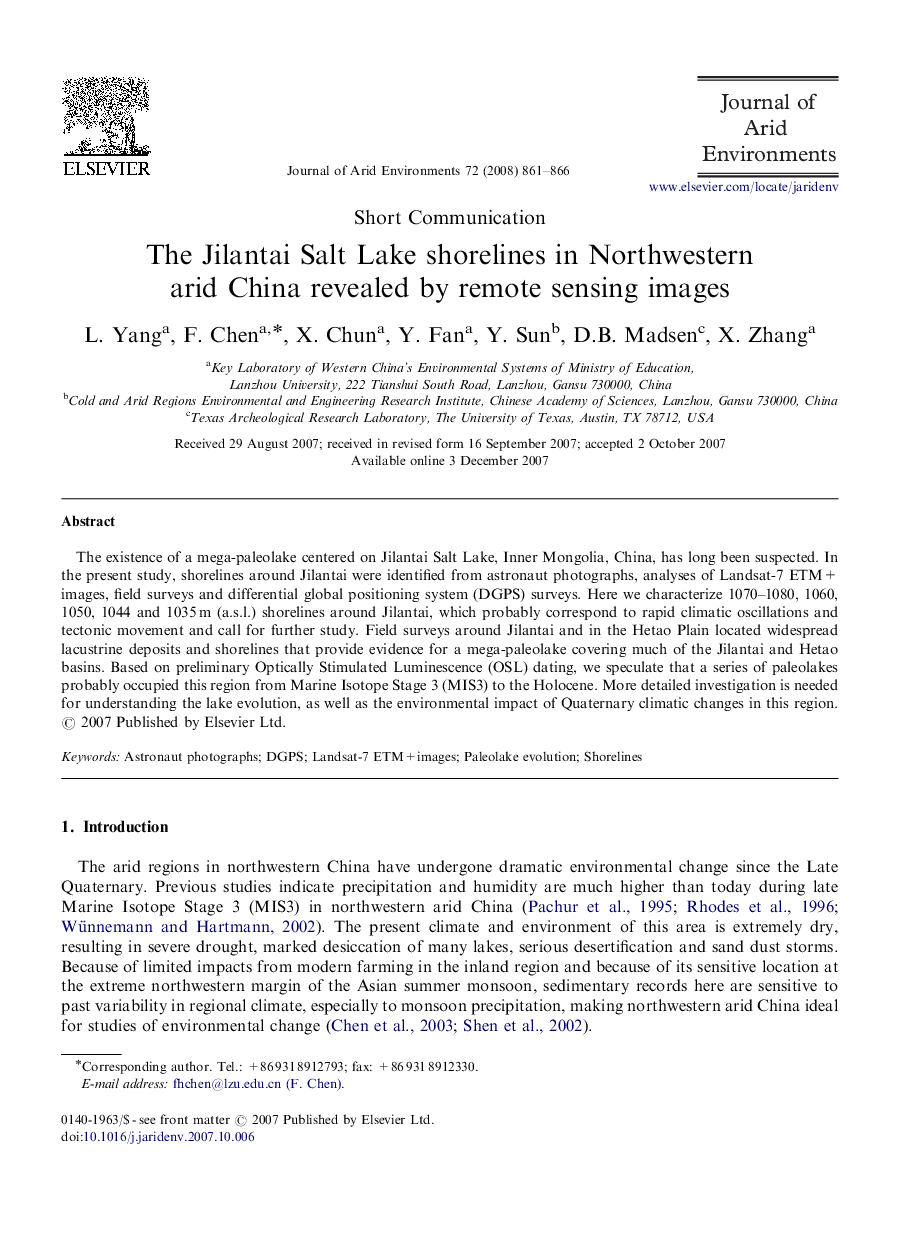| Article ID | Journal | Published Year | Pages | File Type |
|---|---|---|---|---|
| 4394424 | Journal of Arid Environments | 2008 | 6 Pages |
The existence of a mega-paleolake centered on Jilantai Salt Lake, Inner Mongolia, China, has long been suspected. In the present study, shorelines around Jilantai were identified from astronaut photographs, analyses of Landsat-7 ETM+ images, field surveys and differential global positioning system (DGPS) surveys. Here we characterize 1070–1080, 1060, 1050, 1044 and 1035 m (a.s.l.) shorelines around Jilantai, which probably correspond to rapid climatic oscillations and tectonic movement and call for further study. Field surveys around Jilantai and in the Hetao Plain located widespread lacustrine deposits and shorelines that provide evidence for a mega-paleolake covering much of the Jilantai and Hetao basins. Based on preliminary Optically Stimulated Luminescence (OSL) dating, we speculate that a series of paleolakes probably occupied this region from Marine Isotope Stage 3 (MIS3) to the Holocene. More detailed investigation is needed for understanding the lake evolution, as well as the environmental impact of Quaternary climatic changes in this region.
